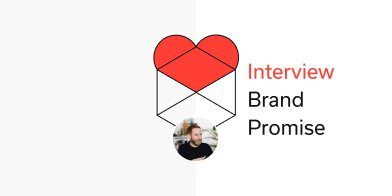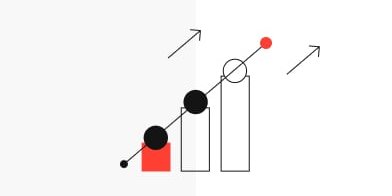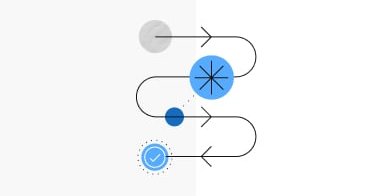We shed a light on the role of Product Design and show you why well-designed digital products and services give you the decisive edge over your competition.
- What is Product Design and why is it so relevant?
- What is a digital Product?
- What does a Product Designer do?
- So how is Product Design implemented at Boana?
What is Product Design and why is it so relevant?
Product design can play a decisive role in whether a user prefers a certain product over another. Because the way a digital product is designed often determines its popularity, the amount of (new) customers, the loyalty of existing customers and the market penetration or competitive advantage.
A digital product that is better designed in its functions, usability and user experience can do better in a highly competitive environment than one with average or neglected product design.
And by the way, the term product design refers to both the process itself and the result of this process.
What is a digital Product?
A digital product is a software-supported product or service that offers the user a benefit. Two types can be distinguished: on the one hand, products that offer functions, e.g. email client software, and on the other hand, websites and portals that provide content, e.g. Netflix.
In general, digital products can be divided into the following areas:
Digital platforms: Large amounts of content are available, for example on portals like Wikipedia or information and entertainment providers like Netflix, newspapers like the British Guardian or magazines like Spiegel online. On other platforms, e.g. marketplaces like Ebay or Craigslist, people exchange goods or – as in the case of ResearchGate – knowledge. The user experience design revolves primarily around finding relevant content via navigation and search, as well as bookmarking a content and exchanging it among users.
E-Commerce & online shops: Some of the world's largest would be Amazon, JD, Apple, Alibaba, etc. Here, analogue goods are sold and the user experience is designed through the entire process until the goods finally arrive at the customer’s home. The user experience plays a major role, especially on the individual product pages, during checkout and in navigation in order to make shopping fun and pushing conversion.
SaaS or licence software: Applications for accounting software, text editors, email providers or even Photoshop are good examples of software that is provided either as a licence (SaaS: Software as a Service) or in a subscription.
Digital Goods: These include e-books or crypto-currencies, streaming services such as Netflix, Prime and Spotify or cloud services such as Dropbox.
To declare the importance of design for digital products, we also use the McKinsey Design Index (MDI). Although this was originally developed for physical goods, it can easily be transferred to digital products.
The authors of the 2018 MDI study identified four areas that companies need to keep in mind in order to use design to make a concrete contribution to value creation. Their findings are as follows:
1. Design is more than a feeling: Design is leadership based on an analytical foundation. The best performing companies measure and promote design performance with the same severity as sales and costs.
2. Design is more than a department: Design is talent that works across functions. Top companies make user-centred design the responsibility of all employees, not a silo function.
3. Design is more than a phase: Design is a continuous process of evolution. The best performing companies reduce the risk of new developments by continuously listening, testing, iterating, discarding and improving – with the end customers.
4. Design is more than a product: Design is usability and user experience. Top companies are breaking down the walls between physical, digital and service design.
In other words, companies that see the design of their (digital) products as an essential part of their business success will gain a decisive advantage over their competitors in the long term.
What does a Product Designer do?
Product designers are some kind of problem solvers whose top premise is customer-centricity. They implement the user role in the design process and marry it with the business needs. In doing so, they ensure that the most relevant, cost-effective and functional product is created and satisfies all stakeholders.
The product designers conceive solutions for problems that may arise during the initial design process. Therefore they build teams together with the product owner, create test plans, produce prototypes and carry out A/B tests.
They also work with both the developers and the marketing teams to ensure synergy between brand and product.
If you are willing to differentiate between a UX and a product design point of view, you will find the – admittedly small – differences, for example, in the way both formulate their questions around a product:
UX: Can I or the customer use this product easily?
Product: Does this product have a chance on the current market?
UX: How do I make the product user-friendly?
Product: How do I make the design cost-effective?
Of course, this doesn't mean that UX designers are not concerned about the market opportunities or the costs of a product.
Product design is very process-oriented: Problems in workflows are identified and reduced. Product designers are responsible for ensuring that designs are developed as intended (keyword: quality assurance). Product design environments like to employ reusable and scalable platforms to increase the skills and efficiency of products.
So how is Product Design implemented at Boana?
We understand product design as a specialisation within UX design. This is also reflected e.g. in job descriptions, when we are looking for "Digital Product Designers UX/UI".
Our workflows are strongly characterised by sprints. We also combine elements from research & development with design. This is evident, for example, in the way we propose and develop user-centred functions for digital services. On one hand, to occupy a specific market niche, on the other hand, to meet the product market fit. We also use design patents to do so.
In order to achieve the best possible design, we always work closely with developers and engineers. We believe design works on the intersection of markets, users, companies and technology. Therefore designers have to understand tech to a certain degree. The advantage: technical hurdles often have to be recognised first and possibly redesigned – this works ideally in close collaboration between designers and developers.




